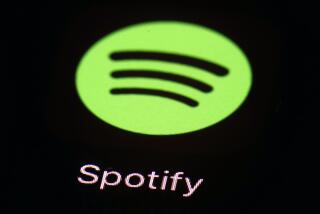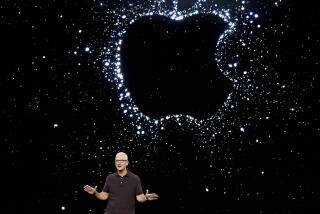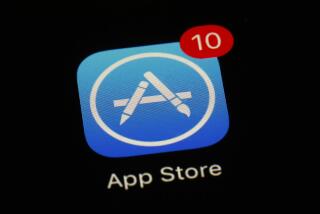Another bite by Apple
As CD sales plummeted, music executives looked in hope toward a new business model: Instead of trying to sell albums for $15 to $20 apiece, offer unlimited access to songs online for a flat monthly fee. The idea, however, has yet to catch on with the masses of music fans. The main impediment for many years was that subscribers couldn’t use the services on the MP3 players that most of them owned, Apple’s iPods. Now, with iPods giving way to iPhones and other mobile devices that support subscription services, Apple is putting a new hurdle in their path: It’s trying to grab a huge chunk of the subscription revenue.
Apple Chief Executive Steve Jobs has never been a fan of music subscriptions, and Apple’s iTunes store has been wildly successful as a conventional retailer selling downloadable songs and albums. But Jobs isn’t singling out the music industry for special (mis)treatment; starting this summer, every iPhone or iPad application that offers a subscription to video, music, news or other media will have to do so through Apple’s store, with Apple taking a 30% vig — er, commission. Content providers may still sell subscriptions through websites or stores, but they cannot offer consumers a discount for not signing up through Apple.
The biggest impact of the decision appears to be on the operators of premium radio and subscription music services, who say their thin profit margins leave no room for the new fee. Executives at Rhapsody, the longest-running music subscription service, have even said they’re considering a “legal response” to Apple’s change in policy, and antitrust regulators are reported to be looking into it.
You can’t blame the music services for feeling beleaguered. The growing popularity of smartphones and tablets had kindled hopes that the time was finally right for subscriptions. Now, the maker of the most popular smartphone and tablet models was threatening to turn the easiest method for attracting and holding onto customers — by letting them subscribe through the service’s app — into the costliest.
But while Apple may have an outsized sense of the value it provides to content providers, it’s just acting like the big, powerful digital-media retailer it is. The unseemly aspect is that Apple competes with some of the services whose costs it’s about to increase. Happily for Rhapsody and the rest of the subscription world, the iPhone isn’t the only game in town, like the iPod effectively was. Shortly after Apple announced its new policy, Google unveiled its “One Pass” system for digital newspapers and magazines that charges publishers only 10%. Collectively, Google’s Android devices are outselling Apple’s iPhones in the U.S. And the iPad’s dominance in the nascent market for tablet computers is likely to evaporate as more manufacturers jump in.
The more competitive these markets become, the less power Apple, Google or any other middleman will have to dictate terms to services such as Rhapsody. For now, though, Apple’s 30% fee is yet another obstacle music subscriptions will have to overcome before they can rescue the industry from the decline of the CD.
More to Read
A cure for the common opinion
Get thought-provoking perspectives with our weekly newsletter.
You may occasionally receive promotional content from the Los Angeles Times.










